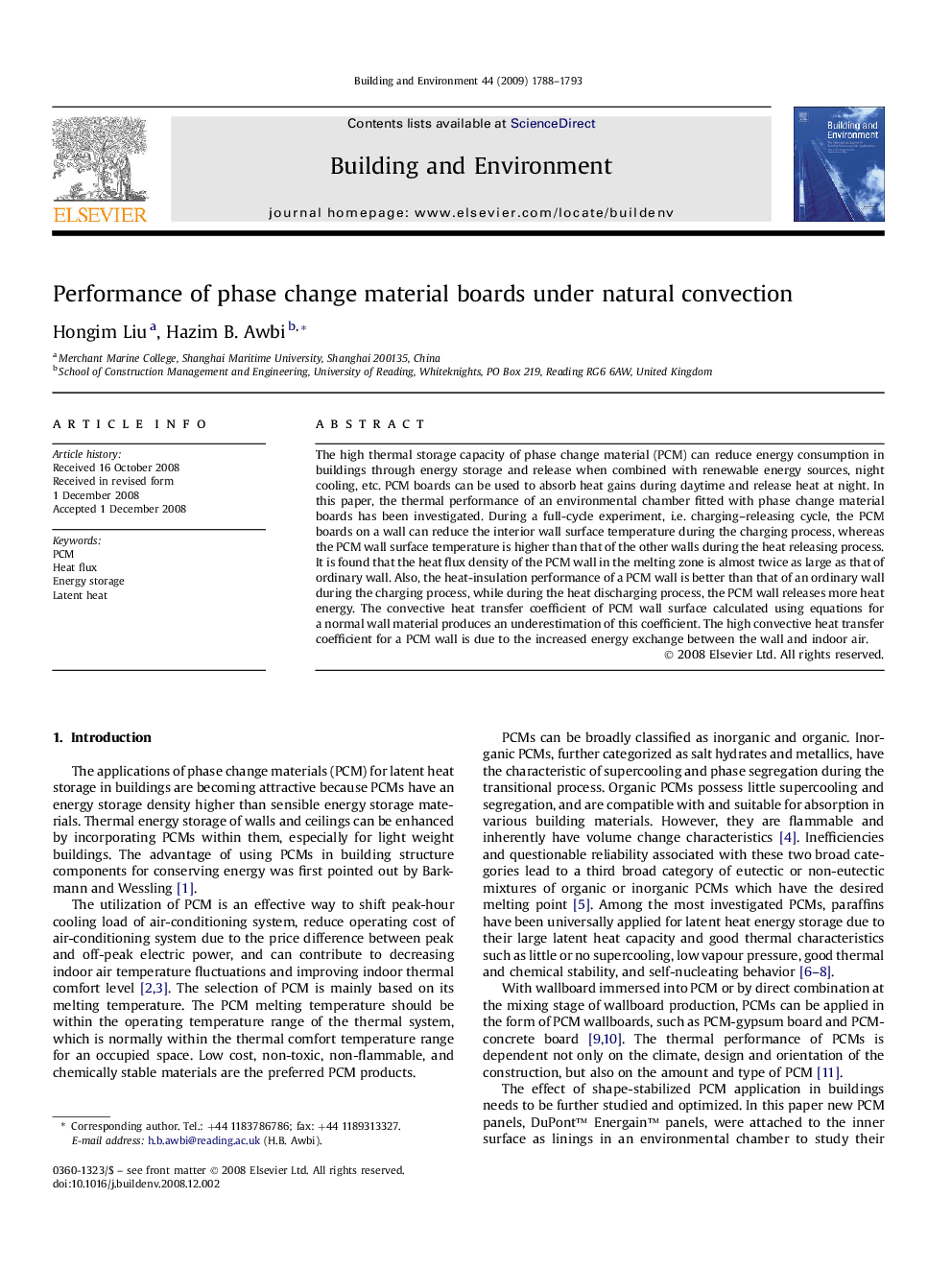| Article ID | Journal | Published Year | Pages | File Type |
|---|---|---|---|---|
| 249697 | Building and Environment | 2009 | 6 Pages |
The high thermal storage capacity of phase change material (PCM) can reduce energy consumption in buildings through energy storage and release when combined with renewable energy sources, night cooling, etc. PCM boards can be used to absorb heat gains during daytime and release heat at night. In this paper, the thermal performance of an environmental chamber fitted with phase change material boards has been investigated. During a full-cycle experiment, i.e. charging–releasing cycle, the PCM boards on a wall can reduce the interior wall surface temperature during the charging process, whereas the PCM wall surface temperature is higher than that of the other walls during the heat releasing process. It is found that the heat flux density of the PCM wall in the melting zone is almost twice as large as that of ordinary wall. Also, the heat-insulation performance of a PCM wall is better than that of an ordinary wall during the charging process, while during the heat discharging process, the PCM wall releases more heat energy. The convective heat transfer coefficient of PCM wall surface calculated using equations for a normal wall material produces an underestimation of this coefficient. The high convective heat transfer coefficient for a PCM wall is due to the increased energy exchange between the wall and indoor air.
